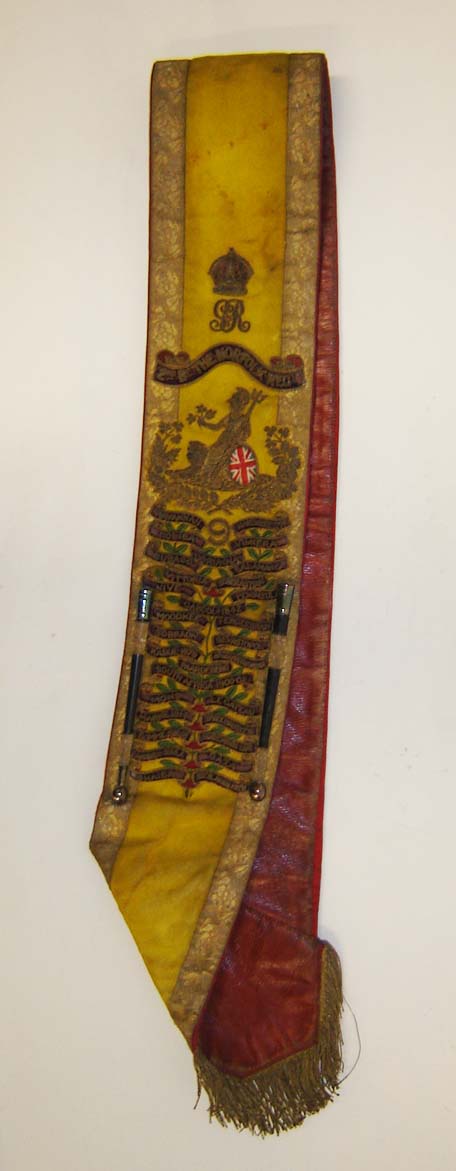Drum Major's Sash
Accession Number NWHRM : 1205
Description
Drum Major's sash, the Norfolk Regiment, 2nd Battalion; yellow suede with black velvet applique and elaborate embroidery in gold thread; lined with red leather; dated from 1920 to 1937
Read MoreDrum Major's Sash
Army drummers originally marched with their individual companies, conveying signals during battle. In the 18th century they were brought together on parade into Corps of Drums. The lead drummer, who had beaten out time on his drum, now marched in front of the Corps, controlling them with visual signals with his staff. He had set his own drum aside, but kept its supportive crossbelt to wear as a sash, with loops to retain his drumsticks as a badge of office. A treatise of 1786 stated that the sticks 'should be of ebony tipped with Silver, it being part of the foppery to be allowed in his Appointments, for no other purpose but merely show'.
Over time, the Drum Major's crossbelt became more ornate, displaying regimental badges and battle honours mounted on silk in the regimental colours. As its wearer marched at the head of the Corps of Drums, preceding the whole parade, the belt immediately proclaimed to onlookers which regiment was approaching.
According to regimental tradition, Queen Anne permitted the figure of Britannia to be used as part of the insignia of the 9th Regiment of Foot - later the Royal Norfolk Regiment - in reward for the gallantry they displayed at the Battle of Almanza on the 25th April 1707. During this decisive encounter of the War of the Spanish Succession, despite being left exposed when their Portuguese allies fell back, the regiment remained steadfast against both the cavalry and infantry forces of the Spanish. The motto 'Firm' was also adopted after this battle, and the date became the Regimental Day.

